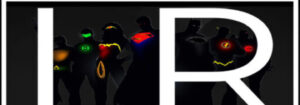As both a comic-book lover and an anime enthusiast, I am more than disappointed. What was intended to be a mash-up of American and Japanese craftsmanship turned out to be a catastrophe—primarily due to its weak script.
Note: This is a review of the American version of the film.
The Plot: Due to a device created by Gorilla Grodd, Batman finds himself transported back in time to Feudal Japan. But it seems that he is not alone in this era and he’ll soon be reunited with old friends and foes.
Analysis: The character design was done by Takashi Okazaki (Afro Samurai) and it’s directed by Junpei Mizusaki. In no way were the illustrations done badly, though due to my frequent reading of DC graphic novels, it took a lot of time for me to get accustomed to foreign entities such as Batman, Gorilla Grodd, The Joker, Harley Quinn, Catwoman, etc., within Japanese framework.
I think the main issue was that, with a running time of only 85 minutes, it was difficult to entertain the over-the-top screenplay penned by Kazuki Nakashima, and its subsequent English version written by Leo Chu and Eric Garcia. The direction by Mizusaki was quite good. The action choreography was ultimately the movie’s strongest point. The writing also had one advantage that it incorporated enough trademark Batman-universe characters such as Nightwing, Robin, Alfred, Penguin, Poision Ivy, etc., as in treating fans to what they want to see.
Yet, the overall storyline was childish at best. I expected a dark anime adaptation of a comic-book character that is known to be distinct from DC’s other caped crusaders such as Superman and Shazam. And the first trailer also promised a rightful, nocturnal take on the Dark Knight.
However, we’re left with many scenes taking place during daylight, most villains (apart from Grodd, Joker and Quinn), not staying true to their personalities and I felt that these fiends could’ve added more to the story, but alas, they were given less than ample screentime as if to make a mockery of Batman’s rogues gallery.
The screenplay proved that Nakashima was nowhere less than ambitious in how he depicted the protagonist-antagonist relationship between Batman and The Joker. But the script ultimately showcased how amateurish his attempt on a comic-book/anime crossover was. The storyline is extremely predictable, and the ending furthermore proved that more time should’ve been taken in the making of Batman Ninja, as this intended blockbuster concluded in a lackluster fashion.
The English version’s voice acting is also below-par. Tony Hale as The Joker was passable. Tara Strong was great as Harley Quinn. The vocal rendition of Batman/Bruce Wayne by Roger Craig Smith was awful—Kevin Conroy would’ve been a much better choice. I didn’t like the facial animation for Bruce Wayne as well.
I noticed that in many sequences the film don’t follow the writings of successful Shounen anime. The non-seriousness in the shows of this type are always complimented by short periods of earnestness within each episode. In Batman Ninja, almost every scene comes out as hilarious, whether the writers wanted it to be this way or not.
The best aspect of Batman Ninja is that it at least stays true to Batman’s ideology. Throughout the venture, Batman follows his motto of Thou Shall Not Kill as well as going through the spiritual process of becoming a ninja. If only this depth applied to the rest of the three-act-structure, the feature would’ve reached the legendary status that immortally embodies its titular figure.
The Verdict: In conclusion, if Batman Ninja is seen as only an action-orientated superhero epic, then you’ll get your adrenaline fix. But long-time fans who craved for originality will most probably find this alternate take on Batman less than refreshing.


